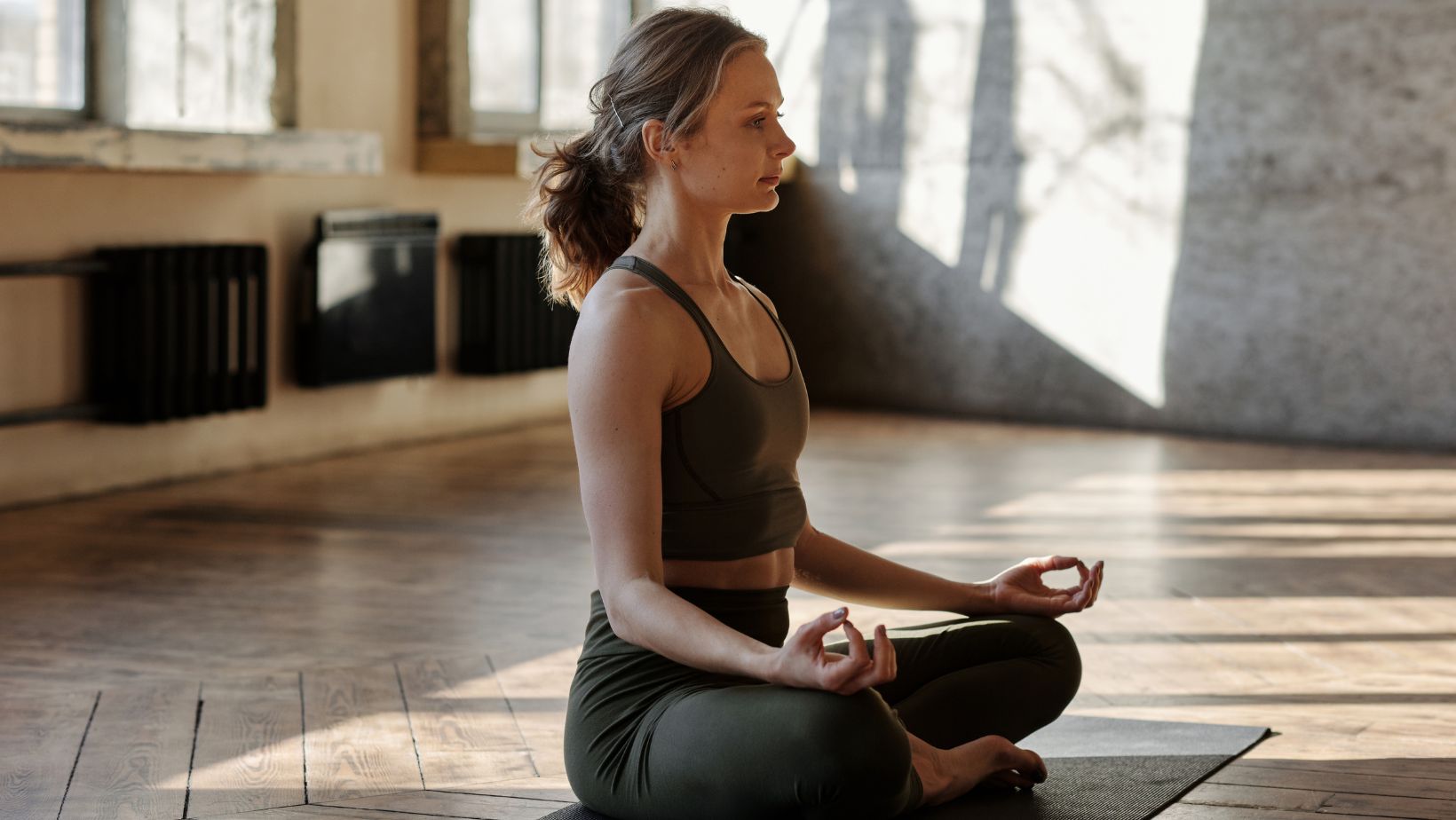Yoga offers numerous physical and emotional benefits, but have you ever wondered why your eyes sometimes tear up during your practice? Whether they are tears of sorrow, irritation, or puzzling emotions, Yoga has an unmatched ability to elicit and release our deepest emotions. In this blog, we will begin a thorough investigation of the psychological and scientific principles underlying the act of crying during a Yoga practice.
We will likewise provide exhaustive guidance to Yoga instructors and pupils alike, enlightening the art of dealing with this phenomenon released during the Yoga practice.
Why Do We Cry During Yoga?

A fascinating event that has confused and intrigued numerous yoga practitioners is crying while practicing Yoga. This emotional release every now and again occurs on the yoga mat itself, and it’s not generally connected with misery or pain. All things considered, an intricate cooperation of components connecting with our biology, our breath, and our feelings may be at fault. We’ll get into these components in more profundity in this section:
1. Emotions Stored in the Body
- Yoga instructors often underline the possibility that we clutter up feelings in our bodies.
- Emotional experiences from daily life can accumulate and linger within us, even when we’re not consciously aware of them.
- The practice of Yoga, with its mindful movements and breath control, can provide a means of releasing these pent-up emotions.
2. The Body-Mind Connection
- Psychiatrist and trauma researcher Bessel van der Kolk’s extensive research suggests a profound connection between our mental and emotional state and our physical body.
- According to van der Kolk, suppressed emotions can find expression as physical symptoms.
- Yoga, being a form of embodied movement, has the potential to tap into these emotional tensions that have become lodged in our bodies over time.
3. The Crucial Role of Breath
- Breath is a fundamental element in the process of emotional release during Yoga.
- Breathing patterns serve as a gateway to our emotions, and altering our breath can influence our emotional state.
- The practice of Yoga teaches us to slow down our breath and synchronize it with our movements.
- This intentional breathwork engages the parasympathetic nervous system, which promotes relaxation and emotional receptivity.
- Ultimately, breath serves as a powerful tool for healing, allowing us to explore and release deep-seated emotions that may have been buried within us.
As we delve further into this exploration of why we cry during Yoga, it becomes evident that the experience is multifaceted and rooted in the intricate connection between our emotional and physical selves, guided by the rhythm of our breath. Understanding these dynamics can deepen our appreciation of the therapeutic potential of Yoga as a means to unlock and release our innermost emotions.
Supportive Guidance for Yoga Teachers

If you are a Yoga instructor, it automatically becomes your responsibility to address any issue that your students might face. If you see your student crying during a session or while performing a particular asana following are few steps you may consider taking to help them out:
Empathy and Patience
- When a student starts to cry during a Yoga class, it’s crucial to approach the situation with empathy and patience.
- Avoid rushing to offer support immediately, as this can potentially make the student feel uncomfortable or pressured.
Allow Moments of Processing
- Give the student a few moments to process their emotions. Allow them the space to understand what they are feeling and why.
- Recognize that everyone’s emotional process is unique and may require different amounts of time.
Creating a Safe Environment
- Create a safe and supportive environment within your Yoga class. Ensure that students feel comfortable expressing their emotions.
- Use language that conveys that all emotions and experiences are welcome in the Yoga space.
Encourage Choice and Autonomy
- Empower students by encouraging them to make choices about how to proceed. Offer options such as pausing, continuing the practice, or focusing on an anchor point.
- Respect their autonomy in deciding how to address their emotions during the practice.
Building Trust
- Building trust with your students is vital. It enables them to feel safe in sharing their emotional experiences.
- Consistently uphold an atmosphere of trust and respect within your Yoga classes.
Affirming Freedom to Exist Honestly
- Emphasize the importance of being authentic and honest with oneself during Yoga practice.
- Acknowledge that Yoga is a space for self-exploration and self-acceptance.
Support for Marginalized Individuals
- Be particularly mindful of creating a safe and inclusive environment for marginalized individuals, as they may carry unique emotional burdens.
- Strive to be an ally by actively welcoming and witnessing all students, regardless of their background or identity.
Guidance for Yoga Students
As as student there are several step that you can in order to address this situation:
Normalize Emotional Release
- Understand that crying during Yoga is a natural and normal occurrence. It’s a sign of emotional release and healing.
- Let go of any shame or embarrassment associated with crying during practice.
The Three Cs: Curiosity, Compassion, Courage
- Approach your tears with curiosity. Observe the emotions that arise without judgment or the need to understand why they are surfacing.
- Practice self-compassion by giving your emotions the space to flow naturally. Avoid suppressing or denying them.
- Be courageous in allowing yourself to be vulnerable. Understand that vulnerability is a sign of strength, not weakness.
Observe Your Emotions
- Take time to observe and acknowledge the emotions that come up during your practice. Recognize that Yoga is a safe space for emotional exploration.
- Trust the process and allow your emotions to surface as they need to.
No Need for Immediate Resolution
- Remember that Yoga may not provide immediate solutions or resolutions to emotional issues.
- Its role may be to bring awareness to your emotions, paving the way for further exploration or understanding.
Seek Professional Help When Needed
- If difficult emotions persist or are related to past traumas, consider consulting a licensed therapist or counselor.
- Professional help can provide valuable support in processing and resolving deeper emotional issues.
Wrapping it Up!
In conclusion, crying during Yoga is a complex and multifaceted experience that can be attributed to the release of stored emotions, the body-mind connection, and the power of breath. Yoga provides a safe space for emotional processing, and understanding this process can help both teachers and students navigate it with sensitivity and mindfulness. Embracing tears as a natural part of the practice can lead to emotional release and a greater sense of well-being.





